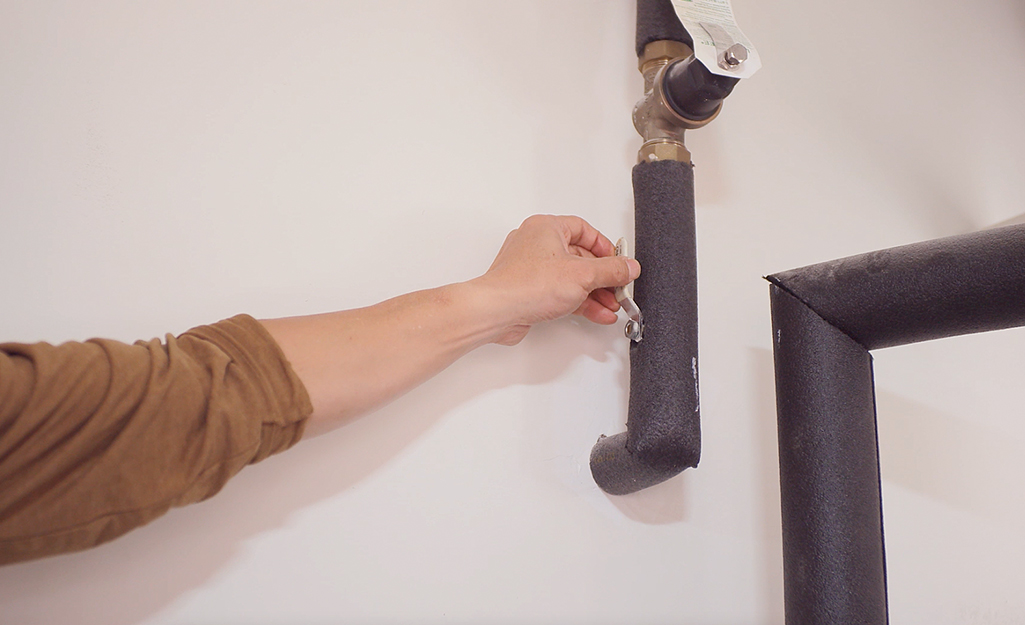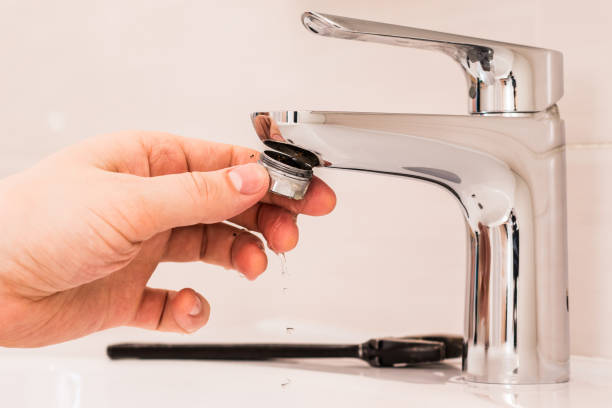My Causes Behind Repairing a Broken Faucet
My Causes Behind Repairing a Broken Faucet
Blog Article
What're your thoughts on Water Dripping from Faucet: Why and How to Fix?

Leaking taps could seem like a minor trouble, however their impact exceeds simply the annoyance of the noise. From drainage to sustaining unneeded monetary prices and health risks, ignoring a leaking tap can bring about numerous consequences. In this short article, we'll explore why it's vital to resolve this usual house concern without delay and properly.
Wastefulness of Water
Ecological Effect
Dripping taps add considerably to water wastage. According to the Epa (EPA), a solitary faucet trickling at one drip per secondly can lose more than 3,000 gallons of water each year. This not only pressures water resources yet also impacts ecosystems and wild animals dependent on them.
Step-by-Step Guide to Dealing With a Dripping Faucet
Devices Required
Before trying to deal with a dripping tap, collect the necessary tools, including an adjustable wrench, screwdrivers, substitute components (such as washing machines or cartridges), and plumber's tape.
Usual Faucet Issues and Their Solutions
Determine the kind of tap and the details issue causing the drip. Typical troubles include worn-out washing machines, rusty shutoff seats, or faulty O-rings. Refer to manufacturer instructions or online tutorials for step-by-step guidance on repair work.
Financial Costs
Boosted Water Expenses
Past the ecological effect, dripping taps can inflate water costs substantially. The built up wastage over time translates into greater energy costs, which could have been avoided with prompt fixings.
Prospective Building Damages
Furthermore, long term leaking can result in harm to fixtures and surfaces surrounding the tap. Water build-up can create staining, deterioration, and even architectural problems if left neglected, leading to added repair work expenses.
Health Worries
Mold And Mildew and Mildew Growth
The constant existence of dampness from a dripping faucet produces an ideal atmosphere for mold and mold development. These fungis not just compromise indoor air high quality however also present wellness threats, specifically for people with respiratory problems or allergic reactions.
Waterborne Conditions
Stationary water in dripping taps can end up being a breeding place for microorganisms and various other microorganisms, enhancing the risk of waterborne diseases. Contaminants such as Legionella microorganisms prosper in stationary water, potentially leading to significant ailments when ingested or inhaled.
Do it yourself vs. Expert Repair
Advantages and disadvantages of Do It Yourself Repair Service
While some might attempt to take care of a leaking tap themselves, do it yourself repair work feature their own collection of challenges. Without correct knowledge and devices, DIY attempts can worsen the problem or bring about insufficient repairs, lengthening the problem.
Benefits of Working With a Professional Plumber
Employing a specialist plumber guarantees that the underlying root cause of the trickling faucet is dealt with successfully. Plumbing professionals possess the proficiency and devices to identify and repair tap problems effectively, conserving time and decreasing the threat of more damages.
Ecological Duty
Specific Payment to Conservation
Taking responsibility for fixing dripping taps straightens with more comprehensive efforts toward water conservation and ecological sustainability. Every person's actions collectively make a significant impact on preserving priceless resources.
Sustainable Living Practices
By focusing on prompt fixings and taking on water-saving routines, people contribute to lasting living practices that benefit both present and future generations.
Safety nets
Normal Maintenance Tips
To prevent trickling taps, execute regular upkeep such as cleaning aerators, checking for leakages, and replacing worn-out components quickly. Furthermore, take into consideration installing water-saving gadgets or upgrading to much more effective fixtures.
Importance of Prompt Fixes
Dealing with dripping taps as quickly as they're discovered stops more water wastage and potential damage, eventually saving both water and cash over time.
Influence On Residential Property Value
Understanding of Well-Maintained Residential Property
Keeping a property in good condition, consisting of resolving upkeep problems like trickling taps, enhances its perceived worth and charm among potential customers or lessees.
Influence on Resale Value
Residences with well-maintained plumbing components, including faucets, command greater resale values in the property market. Dealing with trickling taps can add to a favorable impression during building examinations and arrangements.
Final thought
Dealing with a dripping faucet goes beyond mere ease; it's a crucial step towards saving water, reducing economic costs, and protecting health and wellness and building. Whether through DIY repairs or professional assistance, taking action to repair dripping faucets is a little yet impactful method to advertise liable stewardship of sources and add to a much healthier, extra sustainable future.
How to Fix a Leaky Faucet: Step-by-Step Repair Guide
A leaky faucet may seem like a simple annoyance, but if it's not fixed promptly, that leak could cost hundreds to potentially thousands. From water damage to mold, mildew, and high water bills, even a tiny leak can be catastrophic if left unattended. Damage like this can even affect the overall value of your home, so it's important to take the right approach for leaky faucet repair. You may need the help of a plumber in some cases, but we've got a few tips you can try on how to fix a leaky faucet before calling the pros.
Four Faucet Types
When you're learning how to fix a leaky faucet, the first step is knowing what kind of faucet you're working with! There are four common types.
Cartridge Faucets
Cartridge faucets come in one- or two-handled varieties. In one-handled cartridge faucets, hot and cold water combines in a single cartridge. In the two-handled versions, hot and cold water are controlled separately and mixed in the faucet.
Ball Faucets
Ball faucets have a single lever you push up and down to adjust the pressure and rotate to change the temperature. A slotted metal ball controls the amount of water allowed into the spout.
Compression Washer Faucets
They're the oldest type of faucet, but they're still used in many homes — especially older ones. Compression faucets have two separate handles that, when turned, raise or lower the washer that seals a water valve. This valve stops water from flowing through the faucet when it is turned off.
Disc Faucets
Disc faucets rarely need to be repaired due to their maintenance-free design. The water flow is controlled by two discs — the upper one raises and lowers against a fixed lower disc, creating a watertight seal. If your disc faucet starts leaking, you may need to replace the seals or clean residue buildup from the inlets.
Fixing a Leaky Faucet
Step 1: Turn Off the Water
Whether you're learning how to fix a leaky bathtub faucet or how to fix a leaky kitchen faucet, always turn off the water supply to your working area when you're fixing a leak. The last thing you want is a flood added to your list of things to fix.
Look for the shutoff valves below your sink or around the tub and turn them clockwise to stop the water flow. If your faucet doesn't have shutoff valves, you may need to turn off the water for the whole house. Check to make sure it's off by turning the faucet on. If nothing comes out, you're ready to start the repair.
Step 2: Take Apart the Faucet
How you disassemble your faucet depends on the type of fixture you have. You can use a flathead screwdriver to remove the caps on top of the handle or handles for cartridge and compression faucets. Inside, you should see handle screws. Unscrew these with a screwdriver to remove the handle.
Disc- and ball-style faucets will typically have an inlet screw near the handle, and removing that will reveal the interior of the faucet.
Detach the Valve Stem
For cartridge- and compression-style faucets, you'll see the inner valve stem or cartridge once you remove the faucet handles. If you have a compression faucet, unscrew the brass valve stem. If you have a cartridge faucet, pull out the cartridge. If your cartridge has been in place for a while, it may require some tools or extra force to remove it due to mineral deposits.
Examine and Replace Parts
Once you've removed the parts, check them out to confirm what needs to be replaced. You may see corroded rubber washers, O-rings, stems, or cartridges. On a ball-style faucet, check the seats and springs for damage.
If you need to repair a leaky disc faucet, check the inlet and seals on the lower disc.
Once you determine what parts must be replaced, visit your local hardware store. Bring the damaged parts with you to ensure you can purchase the correct components to replace them.
Clean Valves and Faucet Cavity
If you've removed a stem or cartridge, you may notice mineral buildup in the faucet's threads. Use white vinegar to clean the valve seat by soaking it for a few minutes, then scrub it away with a soft toothbrush and rinse with warm water. You can also clean the interior of the faucet in the same way.
Reassemble the Faucet
Once your faucet is cleaned and the required parts have been replaced, it's time to reassemble it. Put the pieces back together and slowly turn the water supply back on. Doing this slowly is crucial because too much initial water pressure can damage the new hardware you've just installed.
https://homewarranty.firstam.com/blog/how-to-fix-leaky-faucet

I found that article about Should I Repair or Replace a Leaky Faucet? when doing research the search engines. Are you aware of somebody else who is fascinated about the niche? Feel free to share it. We love your readership.
Report this page